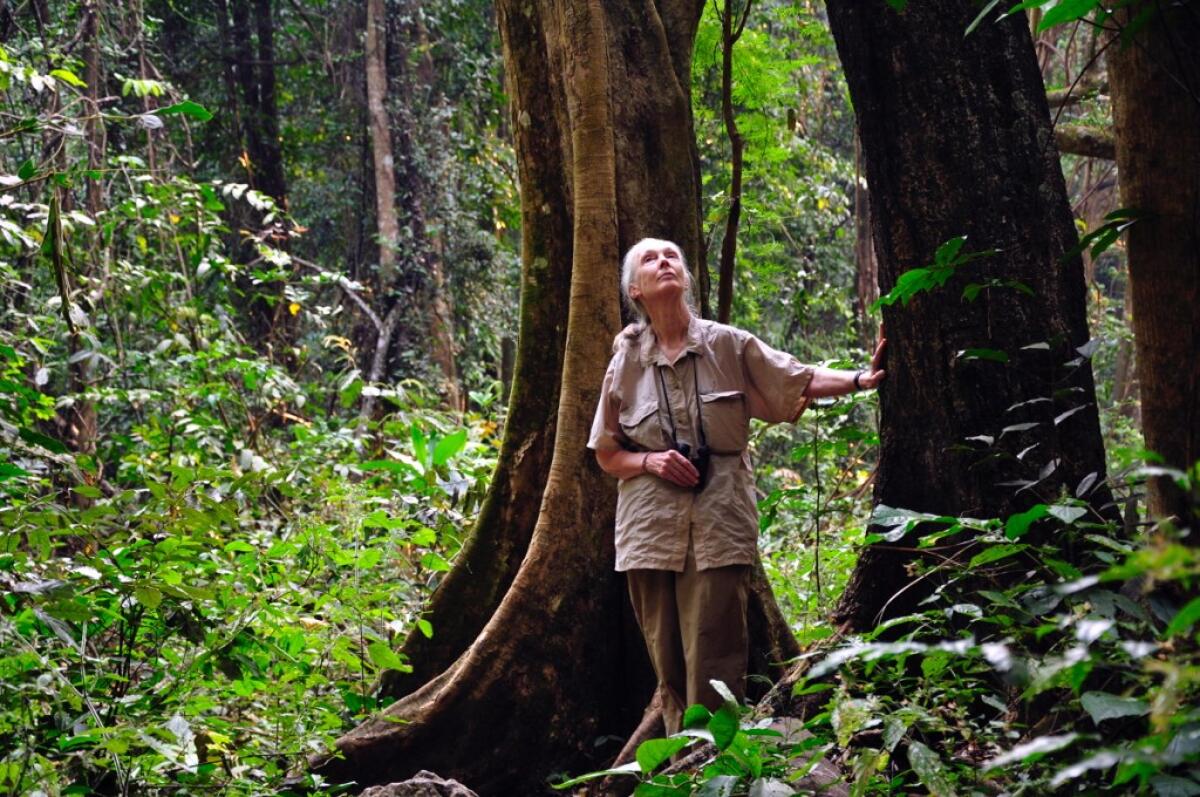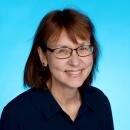Book Club: Reyna Grande digs into an overlooked chapter of U.S. history

- Share via
Good morning, and welcome to the L.A. Times Book Club newsletter.
This month’s book club author Reyna Grande begins “A Ballad of Love and Glory” with a letter to readers explaining why she wrote a novel about “the war that the U.S. cannot remember and Mexico cannot forget” — the Mexican-American War.
“I wrote ‘A Ballad of Love and Glory’ to learn more about this war — or invasion, as it is called in Mexico — a conflict that led to my native country losing half its territory,” she writes. “The research I undertook helped me better understand the U.S.-Mexican border.”
Grande penned “The Distance Between Us,” a bestselling 2012 memoir about her own childhood torn between Mexico and California.
Her new novel transports readers to 1846 as the U.S. Army marches south to the Rio Grande. As the war intensifies, so does the relationship between Grande’s main characters, a Mexican nurse who leaves her family’s ranch and an Irish soldier who deserts the U.S. Army to fight on the Mexican side.
The Irish soldier is based on the real-life Saint Patrick’s Battalion, a unit of mostly Irish immigrants. Grande says she discovered almost half of the U.S. Army was composed of foreign-born soldiers, mostly Irish, German and Italian. “In the U.S. the soldiers of the Saint Patrick’s Battalion are viewed as traitors and renegades, but in Mexico, they are heroes and martyrs.”
The novel weaves in the era’s historical figures as well, such as a U.S. Army officer and future president, Zachary Taylor, and Mexican army officer and statesman Antonio López de Santa Anna. “It’s a great story and a revealing look at a lesser-sung chapter of American history,” says Publishers Weekly.
On March 29, Grande will join L.A. Times Book Club readers for a virtual conversation with editor Steve Padilla. Get tickets and signed books on Eventbrite.
What would you like to ask Reyna Grande? Send your comments in an email to bookclub@latimes.com.
California postscript: In case you missed it, Gustavo Arellano took readers to Campo de Cahuenga in a recent column. The historic Studio City site is where Mexican and U.S. leaders signed the treaty ending the hostilities of the Mexican-American War and laid the foundation upon which California was built.
Behind the book prizes
Paula L. Woods is a Los Angeles book critic, editor and author of the Charlotte Justice series of crime novels. She’s also a judge for the Los Angeles Times Book Prizes, which will be awarded April 22 on the eve of the Festival of Books. Browse the finalists here.
This week, Woods shared a glimpse of her work judging the annual awards:
How she started: “I’ve judged books published in 2018, 2019 and the current prize, for books published in 2021. I chaired the Mystery/Thriller panel this year.”
How it’s going: “The three judges on our panel typically read at least 80 and sometimes over 100 books to arrive at five finalists. It was a good year for mysteries and thrillers, so we were quite busy.” [The mystery finalists are: Alison Gaylin (“The Collective”); Megan Abbott (“The Turnout”); Michael Connelly (“The Dark Hours”); S.A. Cosby ( “Razorblade Tears”) and Silvia Moreno-Garcia (“Velvet Was the Night.”)]
How books are discovered: “We scour all kinds of sources to find books for our panel. Publishing trade journals, catalogs, websites, blogs — nothing is off-limits. But the rules for the book prizes prevent us from accepting unsolicited submissions; the book has to pique our curiosity before we request it through the book prize administrators. And it helps a lot that a couple of us read so widely for our reviews.”
How judges work together: “We have an inclusive group. New York author Alex Segura writes crime fiction and graphic novels and is well-connected in the community of mystery writers. Oline Cogdill, who lives in Florida, is a longtime mystery critic. We all have different interests and perspectives, which makes for a diverse group of books brought to the table and rich discussions along the way. And a few heartbreaks. The books we select have to receive the highest scores from all three judges.”
What makes a good mystery: “The books we select — and this year’s books are an excellent collection — represent what we collectively agree are the best of the year. They must be well-plotted, have rich characterizations and, hopefully, address important topics. A lot of writers can chalk up a high body count in a mystery or thriller. We’re looking for mysteries that illuminate our lives, not in a preachy way but in a manner that make you think long after you finished the book.”

Goodall on hope and action
On Feb. 25 naturalist, activist and U.N. messenger of peace Jane Goodall joined us from her family home in south England to discuss “The Book of Hope: A Survival Guide for Trying Times” with reporter Dorany Pineda.
Goodall talked about her reasons for hope amid environmental crisis, the state of chimpanzee research, her spring plans to visit the “Becoming Jane” exhibit in Los Angeles and her favorite book, “The Lord of the Rings.” “I find that book is so much a commentary on our times today,” she said.
Thank you to all the readers who shared more than 400 questions and comments in advance of book club night. Many people asked: How can one person make a difference in an era of climate change?
Your questions helped shape the discussion. Goodall responded with suggestions, such as this one: “If you think every day, ‘What positive change can I make?’ Think about what you buy: Where does it come from, how was it made, did it harm the environment in its production, was it cruel to animals, is it cheap because of unfair wages in some parts of the world or even slave labor. And if the answer is yes, don’t buy it. Eventually that is consumer pressure. And that is actually making a major change.”
Watch the entire conversation now.
Keep reading
From the Op-Ed pages: Kwame Alexander shares “An American Love Poem.”
From the road: The March edition of Air/Light magazine features three poems by Suzanne Lummis, starting with “I’m Driving to Fresno (And I don’t care who knows it).”
Thirty years after: Actor John Cho has published “Troublemaker,” a young adult novel about the 1992 L.A. riots: “I would have liked a book that spoke to me honestly about adult events,” Cho tells columnist Frank Shyong. “My kids are curious, and we have to help them understand what’s happening in their world. It’s a fantasy that we can compartmentalize those things.”
Conflict photography: Lauren Walsh discusses how photojournalists struggle to capture COVID, Black Lives Matter and now Ukraine.
New books coming in March: Here’s a trio of fresh reading lists. Browse 10 books from the LAT; 14 from the NYT and 13 specifically by writers of the West from Alta magazine.
Hometown inspiration: Author Lynell George shares that Washington Steam Multilingual Academy is now the Octavia E. Butler Magnet School, in honor of the legendary science fiction writer who grew up in Pasadena.
Literary L.A.: Thank you to the readers tweeting favorite passages by L.A. writers @latimesbooks. This gem comes from Raymond Chandler fan Darren Ewing: “It seemed like a nice neighborhood to have bad habits in” (“The Big Sleep”).
Last word: Columnist Patt Morrison points us to a “perfect” Washington Post headline: “Amazon is killing off its physical bookstores, after killing everyone else’s.”
If you enjoy our community book club: The Times has offered many book club conversations and live journalism events free and virtually to make it easy for readers to connect with world-class authors and newsmakers during the pandemic. Now we need your help to keep going and growing. Please consider supporting the new Los Angeles Times Community Fund.
Sign up for our Book Club newsletter
Get the latest news, events and more from the Los Angeles Times Book Club, and help us get L.A. reading and talking.
You may occasionally receive promotional content from the Los Angeles Times.




